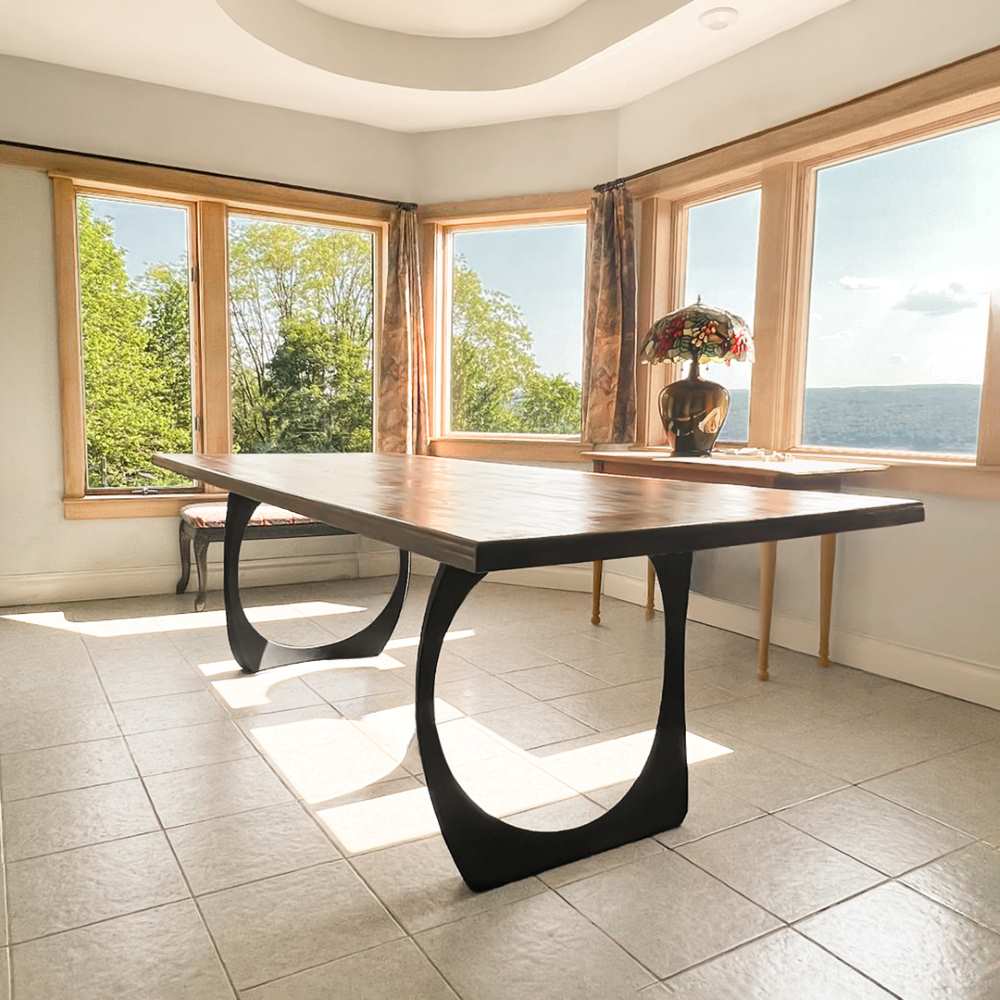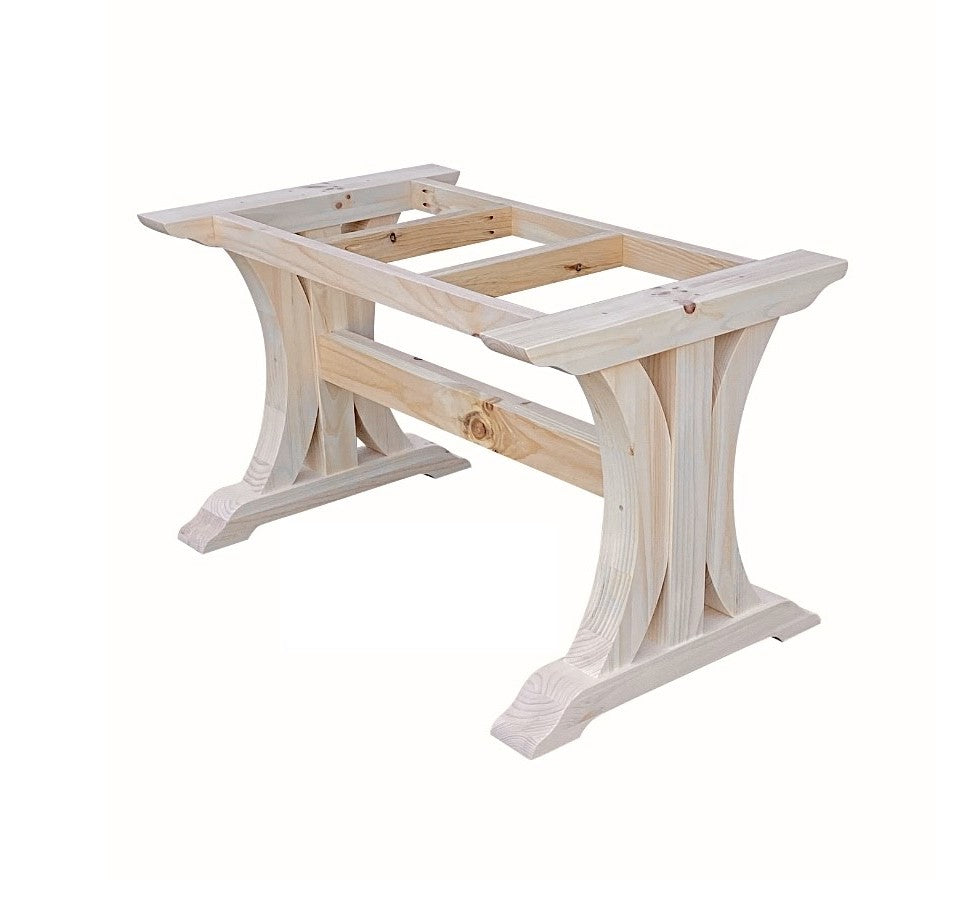Tips for Installing Dining Room Table Legs for a Modern Look
Tips for Installing Dining Room Table Legs for a Modern Look
Blog Article
Exactly How to Pick the Perfect Dining-room Table Legs for Your Home Design
Picking the ideal dining-room table legs is a nuanced procedure that needs mindful factor to consider of different components, including your area constraints, aesthetic choices, and practical demands. The interplay between materials, styles, and dimensions can dramatically affect the ambiance of your dining area, making it vital to approach this choice systematically. As you consider the myriad choices offered, it ends up being clear that the ideal option prolongs beyond mere appearance; it can enhance your overall eating experience. What variables should you focus on to guarantee your choice matches your home's distinct character?
Assess Your Dining Room
Analyzing your eating space is critical for choosing the right table legs that complement both aesthetic appeals and functionality. Begin by gauging the dimensions of your eating location, including ceiling height, flooring room, and closeness to other furnishings. This info will certainly assist determine the proper size and elevation of your dining table, which straight influences the option of table legs.
Next, take into consideration the style and design of your eating space. As an example, an open-concept style might take advantage of table legs that provide aesthetic agility, such as slender metal or acrylic choices. On the other hand, an extra traditional setting may ask for tough wooden legs that offer a feeling of durability.
Review the existing color palette and materials in your dining location. Integrating the table legs with these components develops a cohesive look that enhances the general decoration. In addition, think of the capability required in your space. For instance, if you often hold big celebrations, take into consideration legs that provide extra support and stability.
Inevitably, a comprehensive evaluation of your eating room will lead you in making an informed decision, making sure that your table legs not only enhance the visual allure yet likewise serve useful purposes.
Consider Your Design Preferences
When selecting dining room table legs, it is important to show on your personal design preferences, as they significantly affect the general aesthetic of your eating area. Your choice of table legs can either enhance or contrast with existing decoration, making it crucial to straighten them with your favored interior decoration theme.
If your home leans in the direction of a contemporary aesthetic, take into consideration smooth steel or minimalist wood legs that offer a clean, minimalist look. For an extra standard approach, luxuriant wooden legs with detailed carvings can include a touch of beauty and refinement. Industrial styles profit from robust, resources such as recovered timber and metal mixes, reflecting a sturdy appeal.
In addition, farmhouse and rustic styles usually favor tough, chunky legs that stimulate a feeling of warmth and convenience. Conversely, if your decor is eclectic, you may pick unique forms or a mix of materials to develop visual rate of interest.

Evaluate Product Options
The selection of product for eating room table legs plays a critical function in both durability and aesthetic appeal. Common materials include wood, metal, and composite choices, each offering unique features that can affect the overall appearance and long life of your table.
Timber is a timeless option, known for its warmth and adaptability. Hardwoods like oak and walnut provide extraordinary stamina and can be ended up in different stains to match any design. Nonetheless, softwoods like pine are extra susceptible to scrapes and dents, making them much less suitable for useful reference high-traffic areas.
Steel legs, frequently crafted from steel or aluminum, exude modernity and commercial charm. They are very durable and resistant to put on, making them appropriate for family members with youngsters or frequent gatherings (dining room table legs). In addition, metal can be ended up in various colors, boosting my latest blog post the customization opportunities
Composite products, such as MDF or laminate, deal affordability and diverse layouts. While normally much less sturdy than solid timber or steel, they can still give a trendy look and are typically very easy to preserve.
Eventually, the material you choose need to straighten with your lifestyle, aesthetic preferences, and the level of usage your table will experience.
Determine Elevation and Dimension
Selecting the ideal height and dimension for your eating area table is necessary for both performance and comfort. The typical height for eating tables generally varies from 28 to 30 inches, enabling enough legroom for many people when seated. It is important to take into consideration the measurements of your dining room and the kinds of chairs you plan to use.

Additionally, think about the percentages of your dining-room. A bigger table in a roomy location can create a grand atmosphere, while a smaller table works try this out well in even more intimate settings. Ultimately, the appropriate height and size will certainly balance with your general design and boost the eating experience for you and your guests.
Explore Personalization Opportunities

Additionally, the style of the legs can be customized to fit numerous styles, such as rustic, modern-day, or industrial. Tapered legs can stimulate a mid-century modern-day feeling, while beefy, block-style legs may resonate with conventional or farmhouse design.
Homeowners can additionally discover shade coatings, from all-natural timber stains to paint, enabling them to match or contrast with the tabletop and bordering decor.
Additionally, leg height can be adapted to accommodate details seating setups or individual choices, improving both convenience and functionality.
Finally, unique decorations, such as carvings or attractive brackets, can even more personalize the table legs, making the eating experience not just a declaration however a dish piece in the home. By thinking about these personalization options, property owners can produce a dining-room table that really shows their originality.
Conclusion
Choosing the excellent eating room table legs calls for mindful factor to consider of numerous factors, consisting of the measurements of the eating area, style choices, material longevity, and wanted elevation. Personalization options further enhance the capability to accomplish a natural visual that complements the general style. By methodically examining these components, house owners can make sure that the chosen table legs not just accomplish functional needs yet likewise contribute favorably to the eating experience and atmosphere of the home.
Choosing the suitable dining area table legs is a nuanced procedure that requires mindful consideration of various components, including your space restraints, aesthetic choices, and functional requirements.Evaluating your dining room is crucial for choosing the right table legs that complement both aesthetics and capability.When determining size, determine the location where the table will certainly be positioned to ensure it fits pleasantly, allowing for at least 36 inches of clearance around the table for easy activity. A larger table in a large area can create a grand ambiance, while a smaller sized table works well in more intimate setups.Selecting the suitable eating space table legs needs careful consideration of different aspects, including the measurements of the dining room, style choices, material resilience, and wanted height.
Report this page